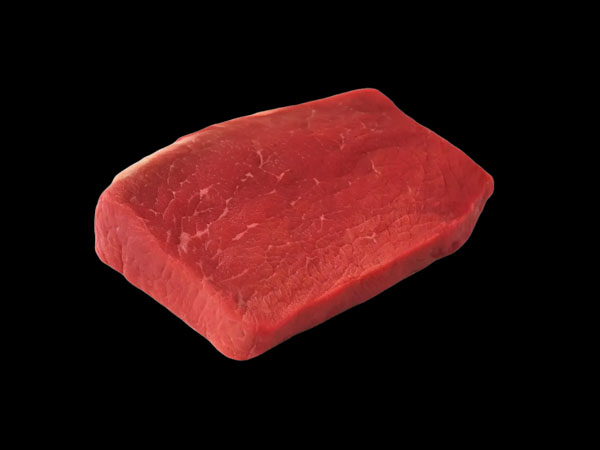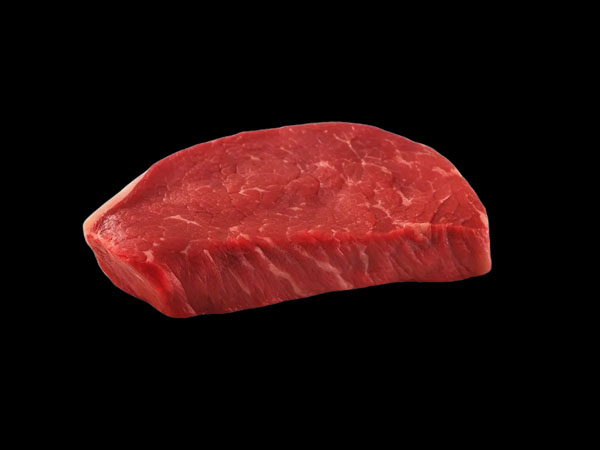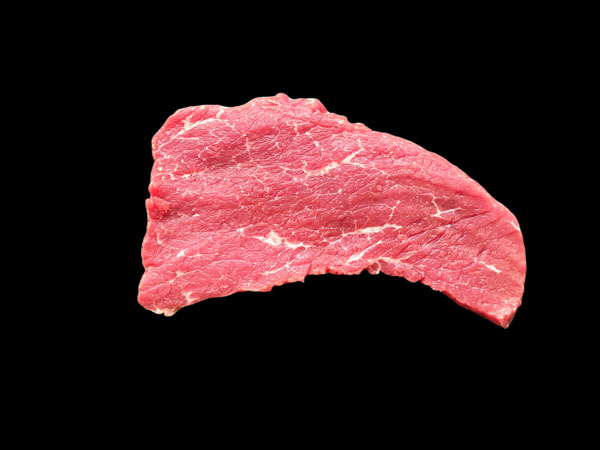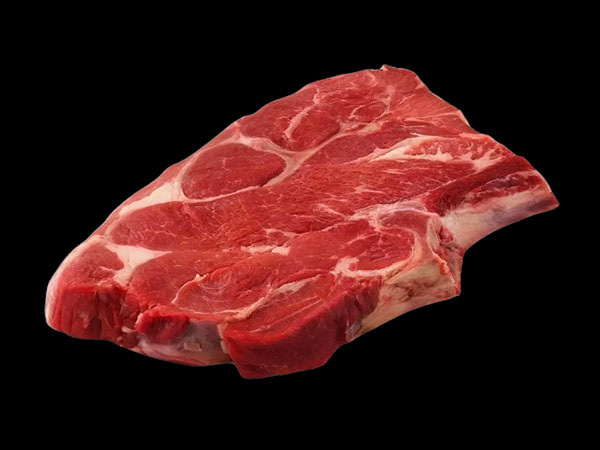Oyster steak (spider steak) is a lesser-known cut with a unique shape. Although small and thin, it’s known for its rich marbling and flavor, and when cooked right, it’s quite tender. Let’s dive into everything you need to know about this unique cut – from where it comes from, its other names, and flavor profile to the best ways to cook it.
What is Oyster Steak?
Oyster steak is a small, flavorful beef cut from the round primal, specifically inside the hip of the animal’s rear legs. It has good marbling, a rich taste, and a relatively tender texture. Its unique shape and web-like marbling make it stand out (that’s why some name it spider steak). Oyster steak is rare, with only two per cow, but it’s worth a try if you come across one at a fair price.
Since it’s a thin cut, oyster steak cooks best quickly over high heat. Thanks to its marbling, aiming for medium-rare (around 135°F) helps render the fat while keeping the meat juicy and tender. It does have a bit of connective tissue, but overall, it’s a great steak to pick up if you come across it for a good deal.
What Are the Other Names for Oyster Steak?
Here are the most popular other names for oyster steak in the United States:
- Spider Steak,
- Butcher’s Steak.
Where Does an Oyster Steak Come From on a Cow?
The oyster steak comes from the round primal, specifically from inside the hip bone of the cow’s rear leg. Since there are only two per cow, local butchers often reserve them for themselves or sell them on request. At the industrial level, however, this cut is usually ground into beef, and that’s the reason you typically won’t find oyster steak in most stores. The easiest way to get one is to order from a skilled butcher or buy it online.

What Does Oyster Steak Taste Like?
Oyster steak has a rich, beefy flavor with a tender, juicy bite. It’s a well-marbled cut with thick bands of fat that add extra depth and richness when cooked right. The best way to bring out its flavor is to cook it quickly over high heat, aiming for medium-rare. This lets the fat render just enough to make the steak juicier and more flavorful.
What Are the Best Methods for Cooking Oyster Steak?
Here are the best cooking methods for oyster steak:
- Pan-Searing Only: The best method to cook oyster steak is to sear it quickly over high heat. This gives it a nice crust while keeping the inside medium-rare. You don’t need a marinade; salt and pepper will do the job. Pan-searing is simple, effective, and works especially well for thicker cuts.
- Grilling: Grilling is another great method to cook oyster steak. Just throw it over direct high heat to get a nice crust while keeping the inside medium-rare. If the steak is thicker, sear it over direct heat first, then move it to indirect heat to finish cooking gently. That strategy (direct first, then indirect heat cooking) only works for thicker steaks, though – most oyster steaks are too thin, so direct high heat is the way to go.
- Sous Vide: Sous vide is a great method to cook thicker oyster steaks. You seal the steak in a vacuum bag and cook it in a precisely controlled water bath so it comes out evenly medium-rare from edge to edge. Once it hits the right temperature, a quick sear in a hot pan or grill gives it that perfect crust. It’s a simple, foolproof method that combines precision with a classic finish for a perfectly cooked steak every time.
Oyster steak is small, naturally well-marbled, and thin, so it’s best cooked hot and fast – like a skirt or flank steak. A quick sear in a pan or on the grill for a couple of minutes is all it needs. Medium-rare is the sweet spot for this cut since the rendered fat keeps it tender, juicy, and full of flavor. Cook it any more or less, and you’ll lose that perfect balance.






